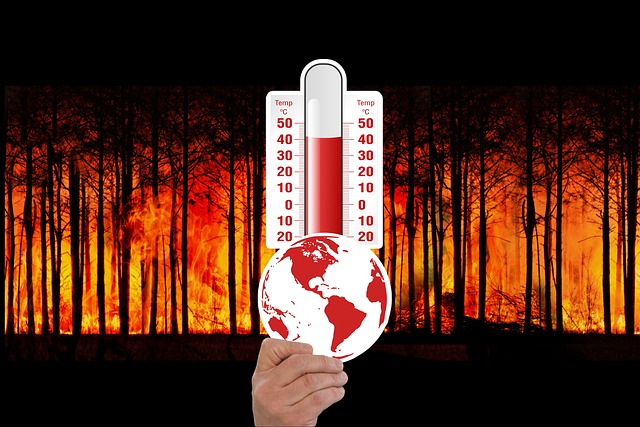How Climate Change is Impacting Global Agriculture

Climate change continues to be a pressing issue worldwide, with its effects being felt in various sectors, including agriculture. The changing climate patterns are significantly impacting global agriculture, leading to challenges in food production, crop cultivation, and livestock management. In this article, we will delve into the ways in which climate change is affecting agriculture around the world.
Rising Temperatures
One of the most noticeable effects of climate change on agriculture is the rise in global temperatures. As temperatures increase, the growing seasons for crops shift, disrupting planting schedules and crop yields. Extreme heat waves can also lead to crop failure and reduced productivity in livestock, affecting food production and availability.

For example, in recent years, regions like California, known for their agriculture production, have experienced prolonged periods of drought and high temperatures. This has led to decreased water availability for irrigation, affecting crop yields for fruits and vegetables. Livestock have also suffered from heat stress, reducing milk and meat production.

Changing Weather Patterns
Climate change is also causing shifts in weather patterns, leading to unpredictable and extreme weather events. Storms, floods, and droughts are becoming more frequent and severe, posing challenges for farmers in planning and managing their crops and livestock.

For instance, in the Midwest region of the United States, farmers have been facing challenges with heavy rainfall and flooding during the planting season. These extreme weather events have delayed planting schedules and affected crop yields, leading to financial losses for farmers. In Southern Africa, prolonged droughts have resulted in crop failures and food shortages, impacting the livelihoods of millions of people.

Impact on Crop Diseases and Pests
The changing climate is also affecting the prevalence and spread of crop diseases and pests, posing additional challenges for farmers. Rising temperatures and changing weather patterns create favorable conditions for the emergence and spread of pests and diseases, leading to crop damage and reduced yields.

For example, in Southeast Asia, rice farmers are facing increased infestations of pests like brown planthoppers and stem borers due to changing climate conditions. These pests damage rice crops, leading to reduced harvests and lower incomes for farmers. In West Africa, cocoa farmers are experiencing outbreaks of fungal diseases like black pod disease, affecting cocoa production and exports.

Adapting to Changing Conditions
Despite the challenges posed by climate change, farmers around the world are finding ways to adapt to the changing conditions. Adopting sustainable farming practices, such as conservation agriculture, agroforestry, and water-efficient irrigation, can help mitigate the effects of climate change on agriculture.

For instance, in India, farmers are implementing techniques like drip irrigation and mulching to conserve water and improve soil health in the face of erratic monsoon rains. In Europe, agroforestry practices, such as planting trees alongside crops, are being used to enhance biodiversity and soil fertility, reducing the impact of climate change on agriculture.

Conclusion
Climate change is a significant threat to global agriculture, with its impacts being felt in various ways around the world. Rising temperatures, changing weather patterns, and the spread of crop diseases and pests are all posing challenges for farmers and food production. However, with the adoption of sustainable farming practices and proactive measures, farmers can mitigate the effects of climate change and ensure the resilience of agriculture in the face of changing conditions.

As we continue to address the issue of climate change, it is essential to prioritize sustainable agriculture practices and support farmers in adapting to the new challenges posed by a changing climate. By working together and taking decisive action, we can safeguard the future of agriculture and food security for generations to come.

